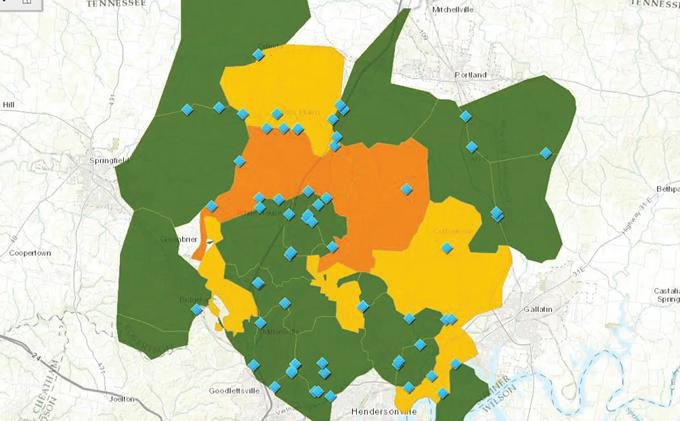Managing Data To Maximize Asset Maintenance Efficiency
By Gary Wong
Utilities are always looking for ways to unlock efficiency, which is the simplest and surest path to saving money. When it comes to asset maintenance, a key has been found.
Although an ounce of prevention is worth a pound of cure, all the money spent on regularly scheduled maintenance can add up to a ton of waste — and still result in unplanned downtime — if asset managers can’t reasonably differentiate between which equipment truly needs attention and which doesn’t. Fortunately, data-centric analytics derived from physical performance in real time can make that distinction. Here’s how.
The Good News/Bad News Of Scheduled Maintenance — And How To Improve On It
The good news about calendar-based scheduled maintenance is that it keeps important equipment from flying totally under the radar with no maintenance attention at all. The bad news is that it offers no guarantees against equipment failure or downtime between periodic maintenance intervals. The worst news is that it can become very expensive in terms of unnecessary component and labor costs for equipment that is functioning perfectly.
By contrast, condition-based preventive maintenance — based on pump curves, run time, flow rates, vibration, temperature, energy consumption, etc. — provides a better way to prioritize the most productive tasks and timing for maintenance. It helps asset managers save on operating expenses (OPEX) while extending asset life and minimizing unexpected downtime or premature failures, which can lead to big capital expenses (CAPEX).
Spotting Early Trends Is Key To Controlling Costs
With the rise in digitalization at water treatment plants (WTPs) and wastewater treatment plants (WWTPs), much of the data needed to implement condition-based asset monitoring and maintenance is typically available. Unfortunately, it might be stored in separate, incompatible systems — distributed control systems (DCS), SCADA systems, IIoT sensors, etc.
While no single factor is a sole indicator of equipment failure or maintenance need, the collective weight of multiple factors can help to classify top-tier maintenance priorities. The key is aggregating all information into one intelligent, centralized resource that enables asset managers to analyze real-world scenarios in real time. Consider how these factors can minimize unnecessary maintenance cost and risk for the rotating equipment (i.e., pumps and blowers) that represents the most critical, maintenance-intensive assets in water and wastewater operations.
• Run-Time Hours/Stop-And-Start Cycles. Having an accurate indicator of wear and tear on individual blowers and pumps requires tracking the cycling and run times of each unit separately. Although those are not the only factors to consider, when weighed against other real-time monitoring, they can provide added confidence for deferring unnecessary maintenance on underutilized equipment.
• Vibration. Hearing wear-inducing vibration or seeing the changes in equipment operation it causes are obvious triggers for maintenance attention. Monitoring built-in vibration sensors to detect the earliest hint of a rising trend in vibration before the problem manifests itself in outwardly visible signs helps maintenance personnel pinpoint issues before physical damage occurs.
• Temperature. Troubleshooting equipment that is “running hot” is a long-standing maintenance practice. Designating that condition as an alarm event turns detection from an easy-to-overlook manual inspection into an automatic occurrence. Then, a follow-up oil analysis can determine whether a lubricant change is warranted before the next scheduled maintenance.
• Energy Consumption. While other conditions might primarily affect maintenance scheduling, monitoring energy consumption can pay off in both maintenance and OPEX savings.
• Flow Rates. Decreased flow rates accompanied by increased energy consumption raise red flags for asset managers to evaluate and intervene with maintenance on the affected pumps or blowers.
• Pump Curves. Incorporating pump curve characteristics into an operational intelligence system and monitoring deviations from that performance tracks exactly how pumps are performing over time. By triggering alarms to indicate when performance deteriorates beyond specified limits, the analytical system can alert asset managers to equipment in the greatest need of attention.
One major U.S. wastewater utility that compared switching from calendar-based maintenance to condition-based maintenance on four key pump assets saved the equivalent of $16,000 in annual maintenance labor on those pumps (Figure 1). That projected to savings of $400,000 and 9,000 hours of labor across their top 100 pumps.

Figure 1. In this test-case scenario, a major wastewater utility realized how much maintenance effort they could save by using an operational intelligence system to identify condition-based maintenance events. Isolating their focus on just four key pumps, they were able to reduce the number of normally scheduled preventive maintenance events by 70 percent.
4 Best Practices For Empowering Decision-Makers With Data
When considering how to implement a condition-based asset maintenance strategy, look for an operational intelligence system capable of supporting these best practices that make asset management easier and more cost-effective.
• Capitalize On Existing Data Collection Resources. There’s no need to start from scratch or struggle to translate historical data from multiple resources. A good operational intelligence system with an open data infrastructure can make it easy to harness historical data from siloed SCADA, DCS, instrument, datalogger, and even cloud systems without needing to translate or manipulate it.
• Get Full-Featured Capability For Focused Analysis. Look for ways to compare current operating conditions against past performance experiences associated with unscheduled maintenance events.
• Visualize The Situation In Proper Context. Make actionable items more obvious by informing system operators, business analysts, asset managers, and toptier decision makers with data comparisons, alarms, and historical perspectives in easy-to-read formats — charts, trend lines, GIS-based maps, etc. (Figure 2).
• Share And Collaborate. Amazing things happen when the people closest to a situation have access to insights that support their own problem-solving skills. They can understand the context better, identify previously unseen correlations, test and confirm their own instincts, and be better empowered to optimize processes and asset maintenance in collaboration with their associates.

Figure 2. Operational intelligence systems that can integrate digital data analysis into GIS mapping solutions provide actionable information in a readily understood context of daily operations.
Shortcuts To Big Savings Can Start With One Modest Step
Because operational intelligence systems can take advantage of data from existing plant systems and sensors, it is possible to implement them without overwhelming capital investments in new plant infrastructure. Starting with a system that provides full analytical functionality for as few as 1,000 data tags — each representing a unique source of data (temperature, vibration, rpm, on/off cycles, etc.) — is enough to support a proof-of-concept trial run. Once the practical value of the condition-based maintenance approach is established, the concept can be rolled out to millions of data tags across the entire WTP or WWTP infrastructure.
About The Author
 Gary Wong is the principal, global water industry at OSIsoft, a leader in real-time operational intelligence. He has over 20 years of extensive international experience providing sustainable, strategic, and cost-effective business solutions in the water industry. Prior to joining OSIsoft, he has held positions with Metro Vancouver and as a consultant directing both public and private sectors on operations, IT strategy, planning, sustainability, and engineering. Wong is also the chairman for the Smart Water Networks Forum (SWAN) Americas Alliance and holds a bachelor’s degree in chemical engineering, is registered as a professional engineer in computer engineering, holds an MBA from the Queen’s School of Business, and is also a chartered professional accountant.
Gary Wong is the principal, global water industry at OSIsoft, a leader in real-time operational intelligence. He has over 20 years of extensive international experience providing sustainable, strategic, and cost-effective business solutions in the water industry. Prior to joining OSIsoft, he has held positions with Metro Vancouver and as a consultant directing both public and private sectors on operations, IT strategy, planning, sustainability, and engineering. Wong is also the chairman for the Smart Water Networks Forum (SWAN) Americas Alliance and holds a bachelor’s degree in chemical engineering, is registered as a professional engineer in computer engineering, holds an MBA from the Queen’s School of Business, and is also a chartered professional accountant.
